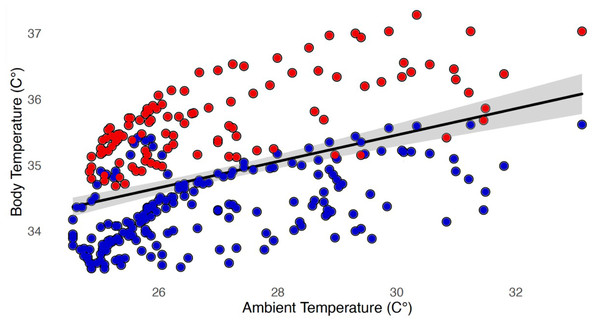eleitl Now • 100%
Zero hyperactivity here. Just leg jerking and pacing back and forth during calls/meetings. Modafinil kinda sorta works but Elvanse/Vyvanse is a whole different league.
Methylphenidate just gave me brain fog. Atomoxetine worked great for 6 months but then just stopped. I stopped taking Vyvanse a long while ago due to side effects.
eleitl Now • 100%
It wasn't me.
eleitl Now • 100%
ADD subtype PI, for primary inattentive. If methylphenidate and atomoxetine don't work for you make sure you try lysdexamfetamine.
Abstract Liquefied natural gas (LNG) exports from the United States have risen dramatically since the LNG-export ban was lifted in 2016, and the United States is now the world's largest exporter. This LNG is produced largely from shale gas. Production of shale gas, as well as liquefaction to make LNG and LNG transport by tanker, is energy-intensive, which contributes significantly to the LNG greenhouse gas footprint. The production and transport of shale gas emits a substantial amount of methane as well, and liquefaction and tanker transport of LNG can further increase methane emissions. Consequently, carbon dioxide (CO2) from end-use combustion of LNG contributes only 34% of the total LNG greenhouse gas footprint, when CO2 and methane are compared over 20 years global warming potential (GWP20) following emission. Upstream and midstream methane emissions are the largest contributors to the LNG footprint (38% of total LNG emissions, based on GWP20). Adding CO2 emissions from the energy used to produce LNG, total upstream and midstream emissions make up on average 47% of the total greenhouse gas footprint of LNG. Other significant emissions are the liquefaction process (8.8% of the total, on average, using GWP20) and tanker transport (5.5% of the total, on average, using GWP20). Emissions from tankers vary from 3.9% to 8.1% depending upon the type of tanker. Surprisingly, the most modern tankers propelled by two- and four-stroke engines have higher total greenhouse gas emissions than steam-powered tankers, despite their greater fuel efficiency and lower CO2 emissions, due to methane slippage in their exhaust. Overall, the greenhouse gas footprint for LNG as a fuel source is 33% greater than that for coal when analyzed using GWP20 (160 g CO2-equivalent/MJ vs. 120 g CO2-equivalent/MJ). Even considered on the time frame of 100 years after emission (GWP100), which severely understates the climatic damage of methane, the LNG footprint equals or exceeds that of coal.
Abstract Methane from livestock is a significant source of greenhouse gas emissions. Under the UN Framework Convention on Climate Change (UNFCCC), Annex I countries' National Inventories report emissions from cattle as enteric or from manure management at ratios of between 3:1 and 9:1 depending on country and cattle type. Field research generally supports the inventories' assumptions about enteric emissions, but these ratios have focused interest on enteric emissions and diverted attention away from those from manure management. Official calculations about manure management emissions factors are more varied than those for enteric emissions and evidence from field measurements suggests inventories may be underestimating manure management emissions especially in the dairy sector. This paper has three objectives. First, it reviews the science underpinning the international framework for estimating methane emissions from manure management. Second, it presents data from two dairy farms in south-west England where measured emissions of methane from slurry storage facilities are found to be four to five times greater than the assumptions in the UK's inventory. If these measurements were representative of the UK, the implication is that total methane emissions from the UK dairy herd would be over 40% greater than the level reported to the UNFCCC and the proportion of total methane emissions from dairy cows arising from manure management would be almost a half rather than less than a quarter. Finally, the paper assesses the potential value if methane were captured from slurry storage facilities. Its value as a biogas is estimated to be £500 million per year for the UK dairy industry (at forecourt diesel prices). The paper concludes that the scale of emissions and the potential economic value of lost biogas are sufficient to warrant urgent research and action to reduce emissions from manure management with the beneficial prospect that a valuable new income stream for farm businesses could also be realised.
 www.nature.com
www.nature.com
Abstract Anthropogenic activities have impacted marine ecosystems at extraordinary scales. Biogenic reef ecosystems built by the European flat oyster (Ostrea edulis) typically declined before scientific monitoring. The past form and extent of these habitats thus remains unknown, with such information potentially providing valuable perspectives for current management and policy. Collating >1,600 records published over 350 years, we created a map of historical oyster reef presence at the resolution of 10 km2 across its biogeographic range, including documenting abundant reef habitats along the coasts of France, Denmark, Ireland and the United Kingdom. Spatial extent data were available from just 26% of locations yet totalled >1.7 million hectares (median reef size = 29.9 ha, range 0.01–1,536,000 ha), with 190 associated macrofauna species from 13 phyla described. Our analysis demonstrates that oyster reefs were once a dominant three-dimensional feature of European coastlines, with their loss pointing to a fundamental restructuring and ‘flattening’ of coastal and shallow-shelf seafloors. This unique empirical record demonstrates the highly degraded nature of European seas and provides key baseline context for international restoration commitments.
eleitl Now • 100%
Oh, he wasn't the one who brought her. That makes sense.
eleitl Now • 100%
Thanks for the explanation. I thought there was another layer of meaning packed in I was missing.
eleitl Now • 66%
I still don't get it. He tries to get help, she points him to the exit. Huh?
eleitl Now • 93%
What is the receptionist pointing at in the third panel and why?
eleitl Now • 100%
To be fair, in 1912 it was not at all obvious at which scale humanity started to burn everything after 1950.
 journals.ametsoc.org
journals.ametsoc.org
Abstract The Greenland Ice Sheet (GrIS) meltwater runoff has increased considerably since the 1990s, leading to implications for the ice sheet mass balance and ecosystem dynamics in ice-free areas. Extreme weather events will likely continue to occur in the coming decades. Therefore, a more thorough understanding of the spatiotemporal patterns of extreme melting events is of interest. This study aims to analyze the evolution of extreme melting events across the GrIS and determine the climatic factors that drive them. Specifically, we have analyzed extreme melting events (90th percentile) across the GrIS from 1950 to 2022 and examined their links to the surface energy balance (SEB) and large-scale atmospheric circulation. Extreme melting days account for approximately 35%–40% of the total accumulated melting per season. We found that extreme melting frequency, intensity, and contribution to the total accumulated June–August (summer) melting show a statistically significant upward trend at a 95% confidence level. The largest trends are detected across the northern GrIS. The trends are independent of the extreme melting percentile rank (90th, 97th, or 99th) analyzed and are consistent with average melting trends that exhibit an increase in similar magnitude and spatial configuration. Radiation plays a dominant role in controlling the SEB during extreme melting days. The increase in extreme melting frequency and intensity is driven by the increase in anticyclonic weather types during summer and more energy available for melting. Our results help to enhance the understanding of extreme events in the Arctic.
eleitl Now • 100%
Nope https://en.wikipedia.org/wiki/List_of_countries_by_number_of_Internet_users
Strangely enough English is spoken in countries other than the US and even more use it as a lingua franca.
It is interesting you think IPv6 is not widespreaad https://www.google.com/intl/en/ipv6/statistics.html
eleitl Now • 100%
eleitl Now • 100%
Don't forget sexual selection for conspicous consumption and social status, plus evolutionary winner-takes-it-all. Capitalism is also a system driven by darwinian-like evolutionary processes.
eleitl Now • 100%
Reddit who?
eleitl Now • 75%
And this is why we're doomed.
Abstract Scientific evidence has documented we are undergoing a mass extinction of species, caused by human activity. However, allocating conservation resources is difficult due to scarce evidence on damages from losing individual species. This paper studies the collapse of vultures in India, triggered by the expiry of a patent on a painkiller. Our results suggest the functional extinction of vultures—efficient scavengers that removed carcasses from the environment—increased human mortality by over 4 percent because of a large negative shock to sanitation. We quantify damages at $69.4 billion per year. These results suggest high returns to conserving keystone species such as vultures
eleitl Now • 100%
I am talking about simple plug-in Balkonkraftwerk. Larger PV installations are a different regulation framework, and need to be signed off on by licensed professionals. Much more expensive, mich longer ROI.
 www.nature.com
www.nature.com
Abstract Background Over 1800 food contact chemicals (FCCs) are known to migrate from food contact articles used to store, process, package, and serve foodstuffs. Many of these FCCs have hazard properties of concern, and still others have never been tested for toxicity. Humans are known to be exposed to FCCs via foods, but the full extent of human exposure to all FCCs is unknown. Objective To close this important knowledge gap, we conducted a systematic overview of FCCs that have been monitored and detected in human biomonitoring studies according to a previously published protocol. Methods We first compared the more than 14,000 known FCCs to five biomonitoring programs and three metabolome/exposome databases. In a second step, we prioritized FCCs that have been frequently detected in food contact materials and systematically mapped the available evidence for their presence in humans. Results For 25% of the known FCCs (3601), we found evidence for their presence in humans. This includes 194 FCCs from human biomonitoring programs, with 80 of these having hazard properties of high concern. Of the 3528 FCCs included in metabolome/exposome databases, most are from the Blood Exposome Database. We found evidence for the presence in humans for 63 of the 175 prioritized FCCs included in the systematic evidence map, and 59 of the prioritized FCCs lack hazard data. Significance Notwithstanding that there are also other sources of exposure for many FCCs, these data will help to prioritize FCCs of concern by linking information on migration and biomonitoring. Our results on FCCs monitored in humans are available as an interactive dashboard (FCChumon) to enable policymakers, public health researchers, and food industry decision-makers to make food contact materials and articles safer, reduce human exposure to hazardous FCCs and improve public health.
eleitl Now • 100%
You can safely feed in a lot more than 800 W if you know what you're doing, but it's illegal.
eleitl Now • 100%
There are now small scale storage systems available to flatten the curve of production and increasenlocal consumption.
eleitl Now • 66%
I can't imagine using a TV. None of them are wall sized and I don't have the space. Pull down screen fits the bill.
eleitl Now • 100%
Bought an EH-TW7000 4K PRO-UHD Projector a couple years back for less than 1 kEUR. Was about the best value then, haven't looked recently.
eleitl Now • 100%
Maybe put Lineage OS on a compatible Android TV box. These do have remotes and have almost no Google telemetry.
eleitl Now • 66%
If you use an Android TV system you don't get to complain about your video output device tracking.
 ourworldindata.org
ourworldindata.org
But can you mine without fossil fuels and fossil-derived materials? How much materials do you need to mine to first transition and then maintain the infrastructure? Can you maintain renewable just with renewable? Taking progressively lower grade ores? What do you do with growing volume of tailings? Such articles are more than a bit misleading.
Abstract Waste heat production represents an inevitable consequence of energy conversion as per the laws of thermodynamics. Based on this fact, by using simple theoretical models, we analyze constraints on the habitability of Earth-like terrestrial planets hosting putative technological species and technospheres characterized by persistent exponential growth of energy consumption and waste heat generation: in particular, we quantify the deleterious effects of rising surface temperature on biospheric processes and the eventual loss of liquid water. Irrespective of whether these sources of energy are ultimately stellar or planetary (e.g., nuclear, fossil fuels) in nature, we demonstrate that the loss of habitable conditions on such terrestrial planets may be expected to occur on timescales of ≲1000 years, as measured from the start of the exponential phase, provided that the annual growth rate of energy consumption is of order 1%. We conclude by discussing the types of evolutionary trajectories that might be feasible for industrialized technological species, and sketch the ensuing implications for technosignature searches.
Abstract Human populations tend to grow steadily, because of the ability of people to make innovations, and thus overcome and extend the limits imposed by natural resources. It is therefore questionable whether traditional concepts of population ecology, including environmental carrying capacity, can be applied to human societies. The existence of carrying capacity cannot be simply inferred from population time-series, but it can be indicated by the tendency of populations to return to a previous state after a disturbance. So far only indirect evidence at a coarse-grained scale has indicated the historical existence of human carrying capacity. We analysed unique historical population data on 88 settlements before and after the Thirty Years War (1618–1648), one the longest and most destructive conflicts in European history, which reduced the population of Central Europe by 30–50%. The recovery rate of individual settlements after the war was positively correlated with the extent of the disturbance, so that the population size of the settlements after a period of regeneration was similar to the pre-war situation, indicating an equilibrium population size (i.e. carrying capacity). The carrying capacity of individual settlements was positively determined mostly by the fertility of the soil and the area of the cadastre, and negatively by the number of other settlements in the surroundings. Pre-industrial human population sizes were thus probably controlled by negative density dependence mediated by soil fertility, which could not increase due to limited agricultural technologies.








